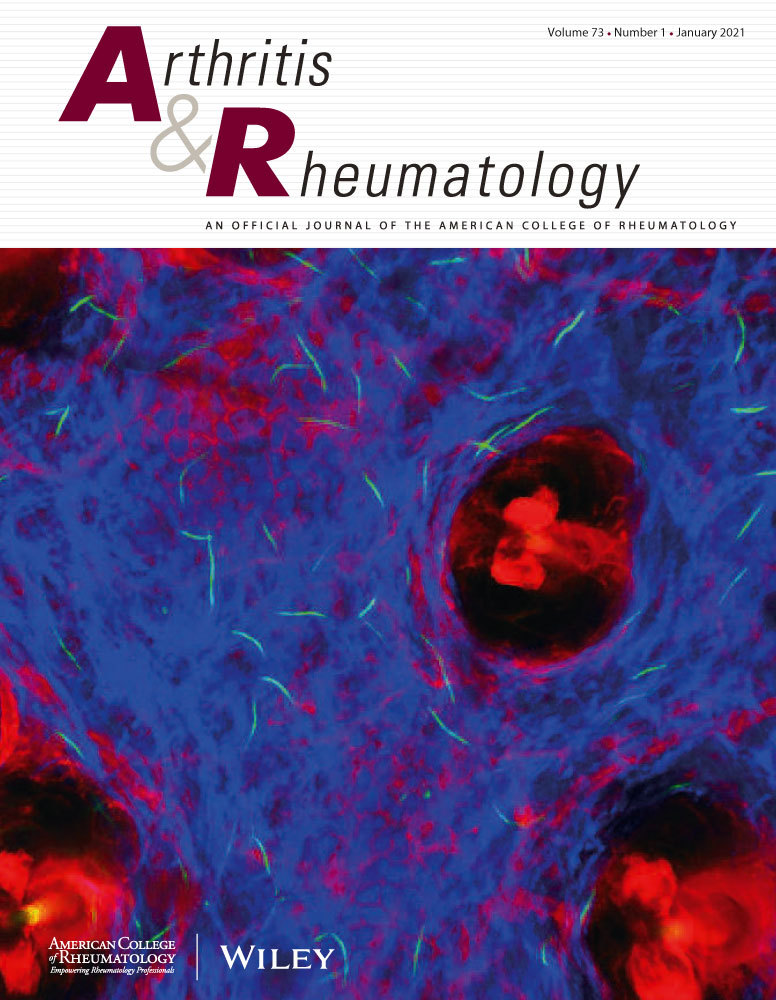胰高血糖素样肽-1受体激动剂的使用和系统性红斑狼疮和狼疮肾炎患者心脏和肾脏不良结局的风险
IF 10.9
1区 医学
Q1 RHEUMATOLOGY
引用次数: 0
摘要
目的胰高血糖素样肽-1受体激动剂(GLP-1RA)对2型糖尿病(T2D)患者具有心脏保护和肾脏保护作用。我们试图确定GLP-1RA是否能改善系统性红斑狼疮(SLE)和狼疮肾炎(LN)患者的心血管(CV)和肾脏预后。方法:我们模拟了一项实用的目标试验,利用美国大型多中心电子健康记录数据库,评估GLP-1RA与比较降糖药二肽基肽酶4抑制剂(DPP4i)对SLE和T2D患者CV和肾脏结局的影响。我们使用倾向评分重叠加权来模拟治疗组之间的随机化。结果包括主要不良心血管事件、静脉血栓形成(VTE)、肾脏疾病进展(eGFR下降≥30%或新发终末期肾脏疾病)和全因死亡率。我们使用Cox回归比较加权总体的风险比(HR)。在二次分析中,我们只纳入了LN患者。结果GLP-1RA和DPP4i的启动剂分别有910种和1004种,分别包括267例和324例LN患者。倾向评分重叠加权后平衡基线协变量。与DPP4i相比,GLP-1RA的MACE (HR 0.66 [95% CI 0.48-0.91])、VTE (HR 0.49[0.24-0.97])、肾脏疾病进展(HR 0.77[0.60-0.98])和全因死亡率(HR 0.26 [CI 0.10-0.68])的风险更低。在LN患者中,GLP-1RA的使用同样与MACE和肾脏疾病进展的风险降低相关。结论:在狼疮和T2D患者中,与使用DPP4i相比,使用GLP-1RA的不良CV、肾脏结局和死亡率风险较低。本文章由计算机程序翻译,如有差异,请以英文原文为准。
Glucagon-Like Peptide-1 Receptor Agonist Use and the Risk of Adverse Cardiac and Kidney Outcomes Among Patients with Systemic Lupus Erythematosus and Lupus Nephritis.
OBJECTIVE
Glucagon-like peptide-1 receptor agonists (GLP-1RA) have cardioprotective and kidney-protective benefits among patients with type 2 diabetes (T2D). We sought to determine whether GLP-1RA use improves cardiovascular (CV) and kidney outcomes among patients with systemic lupus erythematosus (SLE) and lupus nephritis (LN).
METHODS
We emulated a pragmatic target trial to evaluate the impact of GLP-1RA vs. comparator hypoglycemic agents, dipeptidyl peptidase 4 inhibitors (DPP4i), on CV and kidney outcomes among patients with SLE and T2D using a large, US multi-center electronic health record database. We used propensity score overlap weighting to emulate randomization between treatment groups. Outcomes included major adverse cardiovascular events, venous thrombosis (VTE), kidney disease progression (eGFR decline ≥ 30% or new-onset end-stage kidney disease), and all-cause mortality. We used Cox regression to compare hazard ratios (HR) based on the weighted populations. In a secondary analysis, we only included patients with LN.
RESULTS
There were 910 and 1004 initiators of GLP-1RA and DPP4i, respectively, including 267 and 324 patients with LN, respectively. Baseline covariates were balanced after propensity score overlap weighting. The risks of MACE (HR 0.66 [95% CI 0.48-0.91]), VTE (HR 0.49 [0.24-0.97]), kidney disease progression (HR 0.77 [0.60-0.98]), and all-cause mortality (HR 0.26 [CI 0.10-0.68]) were lower with GLP-1RA vs. DPP4i use. GLP-1RA use was similarly associated with lower risks of MACE and kidney disease progression among patients with LN.
CONCLUSION
We found lower risks of adverse CV and kidney outcomes and mortality with GLP-1RA use compared with DPP4i use among patients with lupus and T2D.
求助全文
通过发布文献求助,成功后即可免费获取论文全文。
去求助
来源期刊

Arthritis & Rheumatology
RHEUMATOLOGY-
CiteScore
20.90
自引率
3.00%
发文量
371
期刊介绍:
Arthritis & Rheumatology is the official journal of the American College of Rheumatology and focuses on the natural history, pathophysiology, treatment, and outcome of rheumatic diseases. It is a peer-reviewed publication that aims to provide the highest quality basic and clinical research in this field. The journal covers a wide range of investigative areas and also includes review articles, editorials, and educational material for researchers and clinicians. Being recognized as a leading research journal in rheumatology, Arthritis & Rheumatology serves the global community of rheumatology investigators and clinicians.
 求助内容:
求助内容: 应助结果提醒方式:
应助结果提醒方式:


